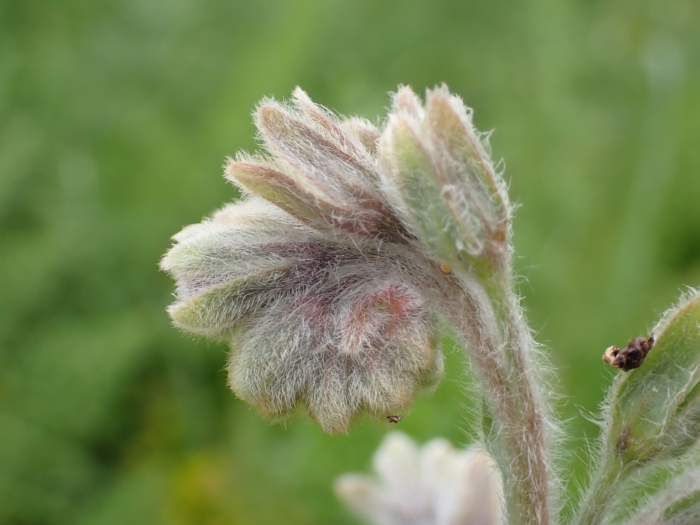Hidden Hound’s Tongue
(Cynoglossum clandestinum)
Hidden Hound’s Tongue (Cynoglossum clandestinum)
/
/

Elias
CC BY 4.0
Image By:
Elias
Recorded By:
Copyright:
CC BY 4.0
Copyright Notice:
Photo by: Elias | License Type: CC BY 4.0 | License URL: http://creativecommons.org/licenses/by/4.0/ | Rights Holder: Elias | Publisher: iNaturalist | Date Created: 2024-01-28T11:40:26-08:00 |




















Estimated Native Range
Summary
Cynoglossum clandestinum, commonly known as Hidden Hound’s Tongue or Blue Hound’s Tongue, is a biennial herb native to a wide range of habitats including open woodlands, grasslands, and meadows throughout Southern Europe and North Africa. It typically grows at a moderate rate to a height of 1.5-3 feet (0.46-0.9 meters) and a width of 1-1.5 feet (0.3-0.5 meters). The plant features coarse, hairy leaves and bears clusters of intense blue, trumpet-shaped flowers that are quite showy and bloom in the spring and summer months. The foliage may be unremarkable, but the flowers are a highlight in the garden during their blooming season.
Hidden Hound’s Tongue is valued for its striking blue flowers which can add a splash of color to woodland gardens, borders, and naturalized areas. It is relatively easy to maintain, requiring medium amounts of water and thriving in part shade to full sun. It adapts well to a variety of soil types, including clay, loam, and sandy soils, provided they have medium drainage. While it is not commonly used for culinary or medicinal purposes, its ornamental value is significant. Gardeners should be aware that Cynoglossum clandestinum can self-seed prolifically, which contributes to its invasive potential in some regions. It is advisable to remove spent flowers to prevent unwanted spread.CC BY-SA 4.0
Hidden Hound’s Tongue is valued for its striking blue flowers which can add a splash of color to woodland gardens, borders, and naturalized areas. It is relatively easy to maintain, requiring medium amounts of water and thriving in part shade to full sun. It adapts well to a variety of soil types, including clay, loam, and sandy soils, provided they have medium drainage. While it is not commonly used for culinary or medicinal purposes, its ornamental value is significant. Gardeners should be aware that Cynoglossum clandestinum can self-seed prolifically, which contributes to its invasive potential in some regions. It is advisable to remove spent flowers to prevent unwanted spread.CC BY-SA 4.0
Plant Description
- Plant Type: Herb
- Height: 1.5-3 feet
- Width: 1-1.5 feet
- Growth Rate: Moderate
- Flower Color: Blue
- Flowering Season: Spring, Summer
- Leaf Retention: Deciduous
Growth Requirements
- Sun: Part Shade, Full Sun
- Water: Medium
- Drainage: Medium
Common Uses
Bee Garden, Border Plant, Butterfly Garden, Low Maintenance
Natural Habitat
Open woodlands, grasslands, and meadows throughout Southern Europe and North Africa
Other Names
Common Names: Blue Hound’s Tongue
Scientific Names: , Cynoglossum clandestinum, Cynoglossum clandestinum var. fallax, Cynoglossum fulvum, Cynoglossum officinale, Cynoglossum tomentosum,
GBIF Accepted Name: